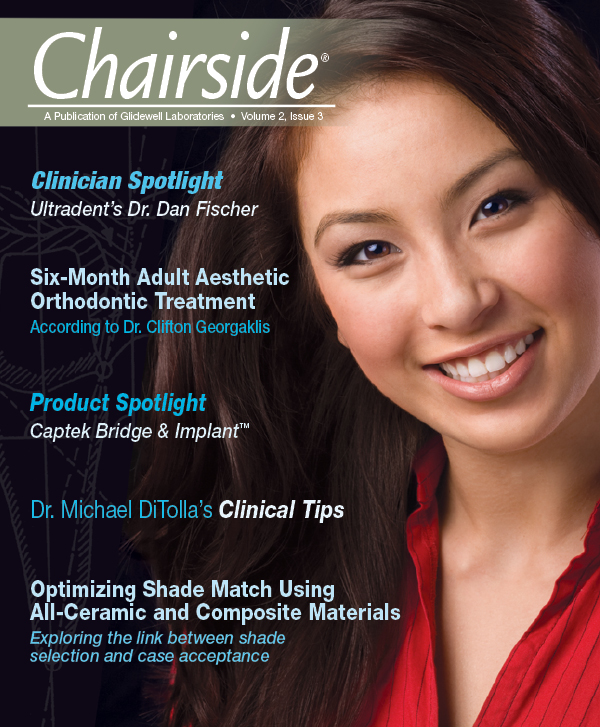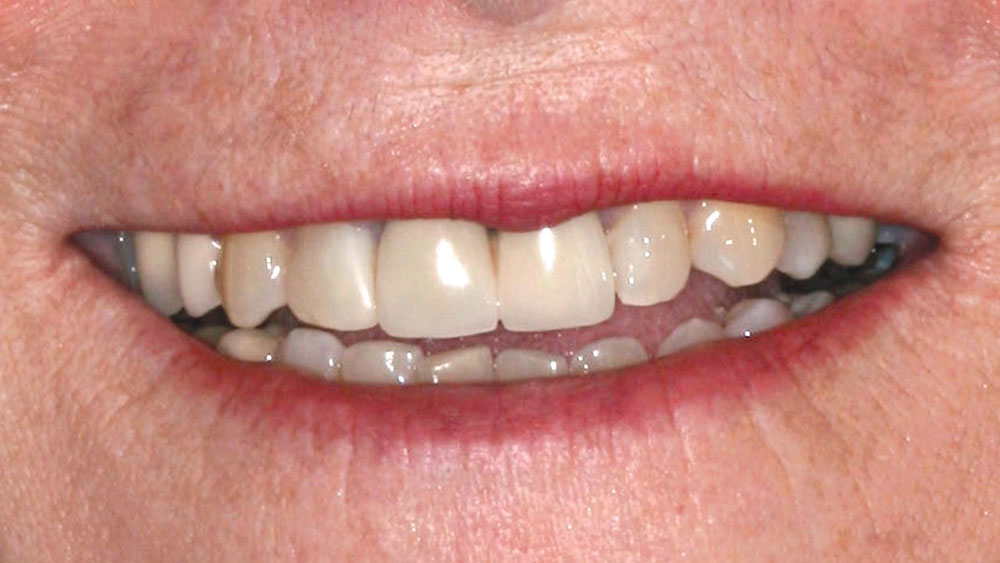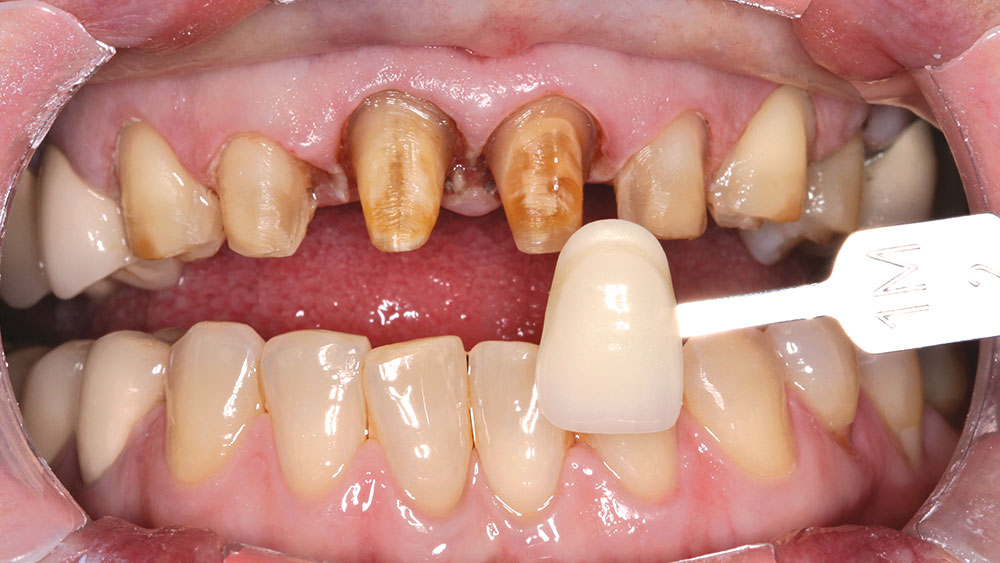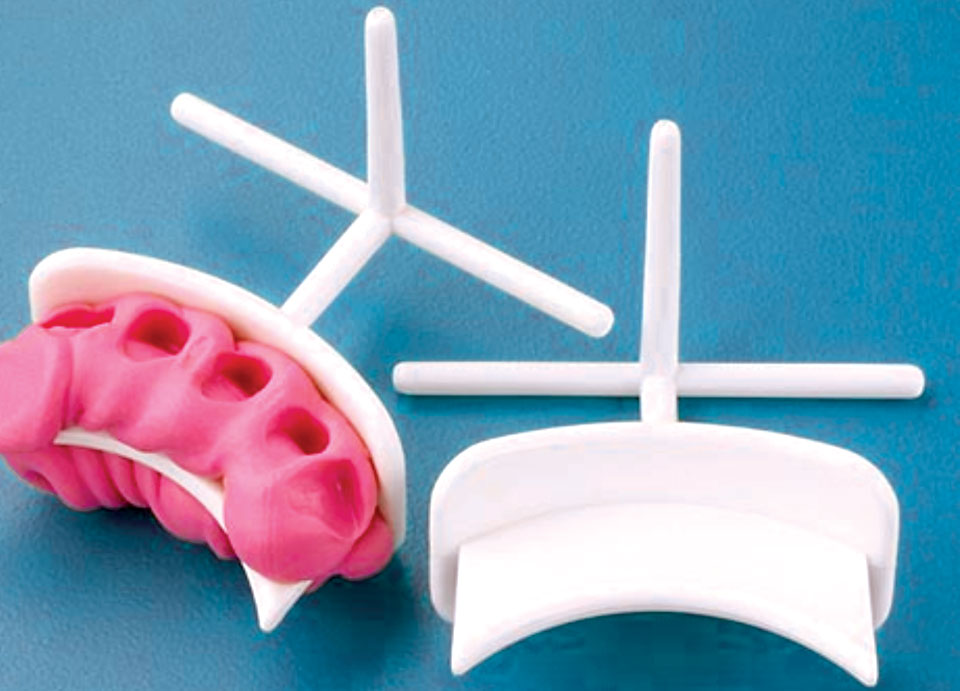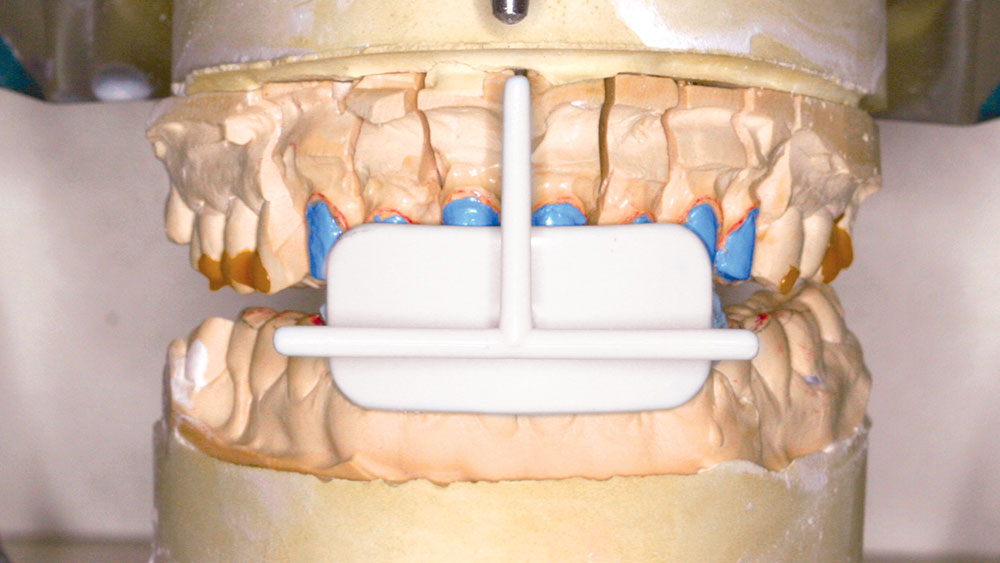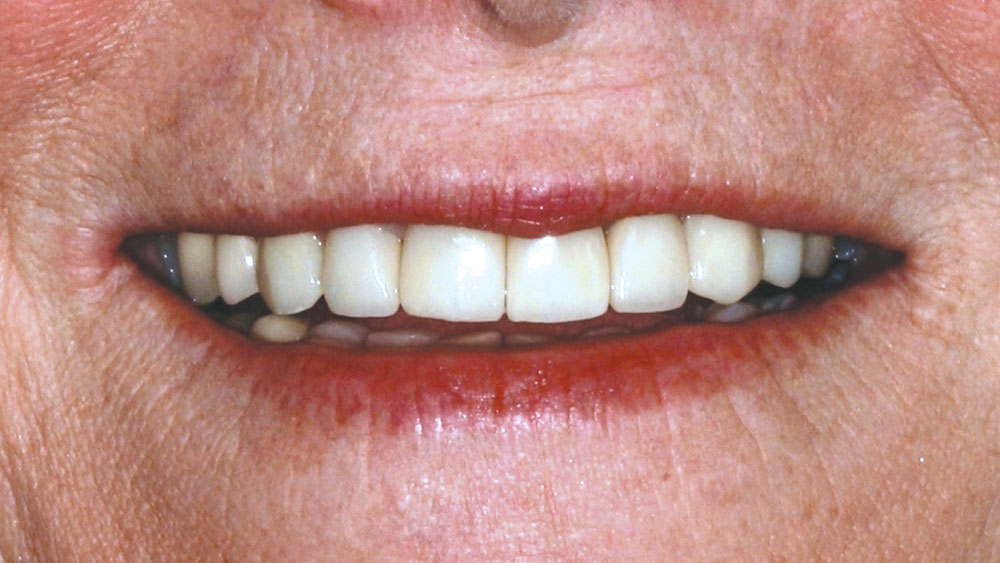Cosmetic Aligner: A Smile Makeover Case Report
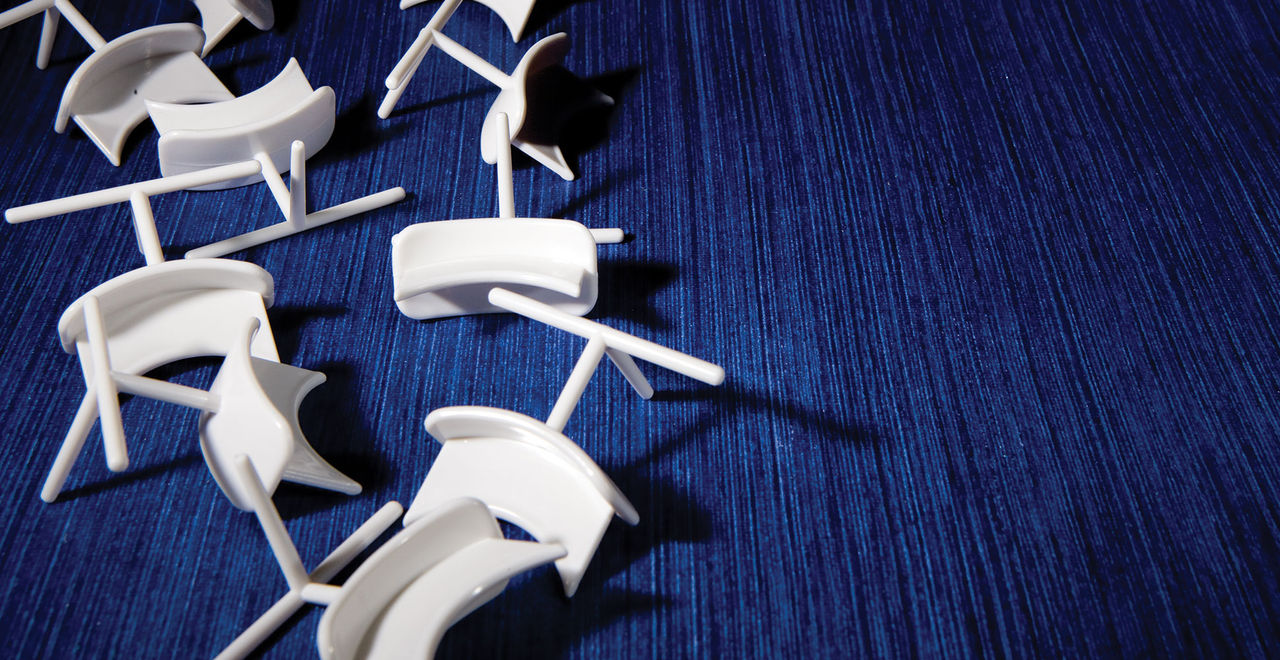
The Cosmetic Aligner is used to register the anterior midline and horizontal plane during dental treatment. Since these alignments are frequently difficult to determine from master models alone, the aligner easily transfers the information after tooth preparation. This information is crucial to effectively communicate with the lab tech for fabrication of anterior crowns and veneers, and to attain an excellent cosmetic result.
To contact Dr. Carlos Meulener or inquire about the Cosmetic Aligner, call 877-586-7396.

